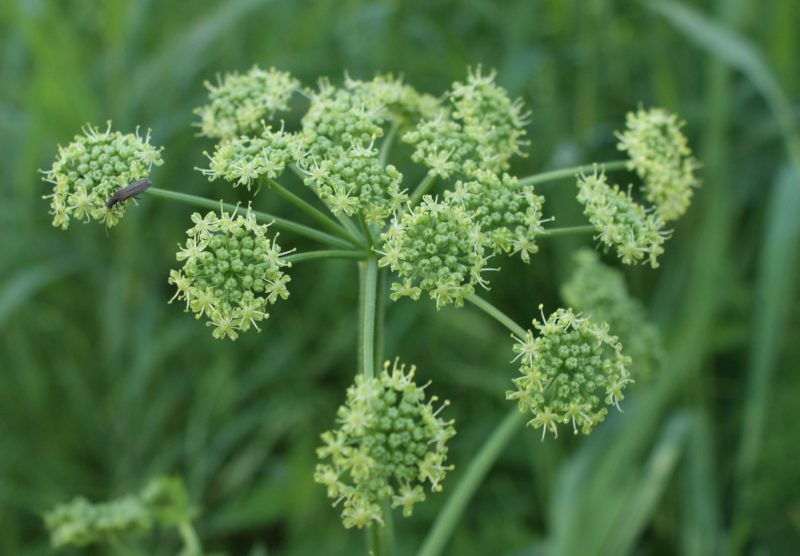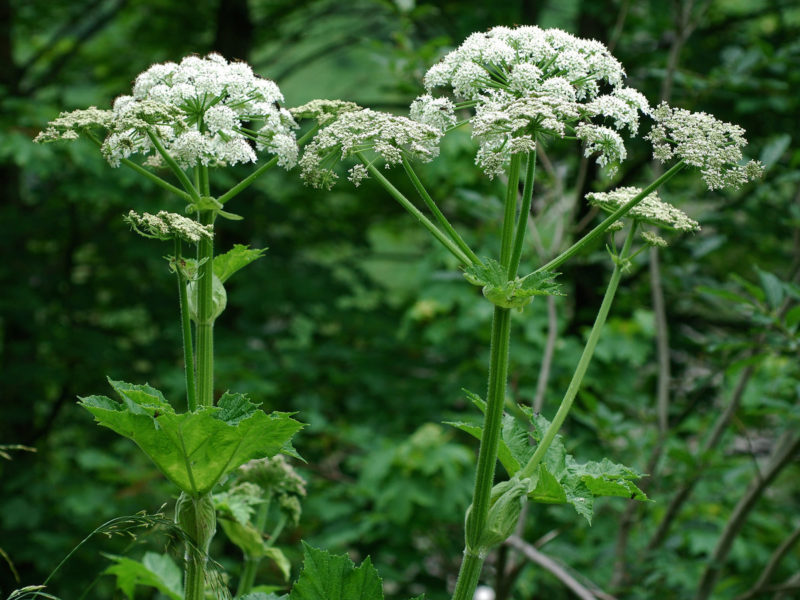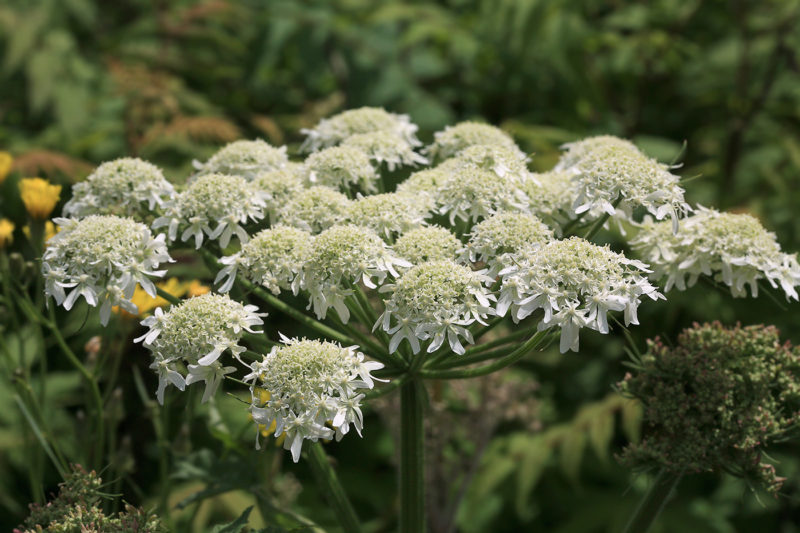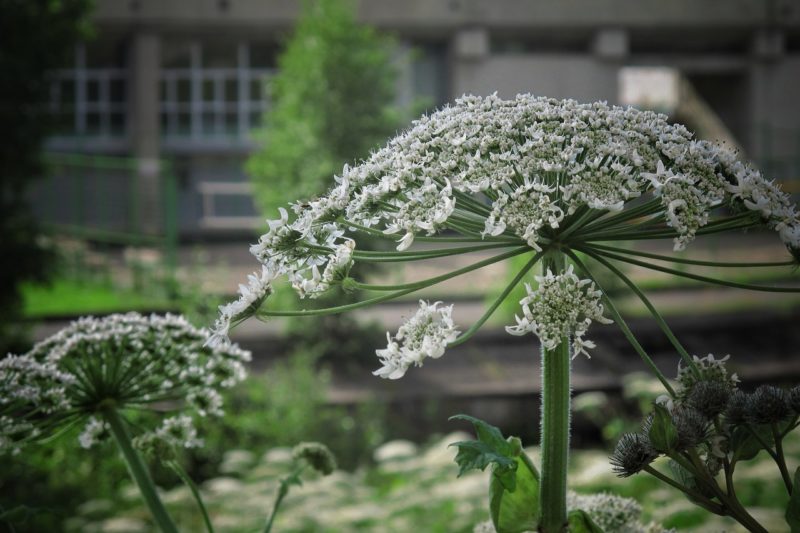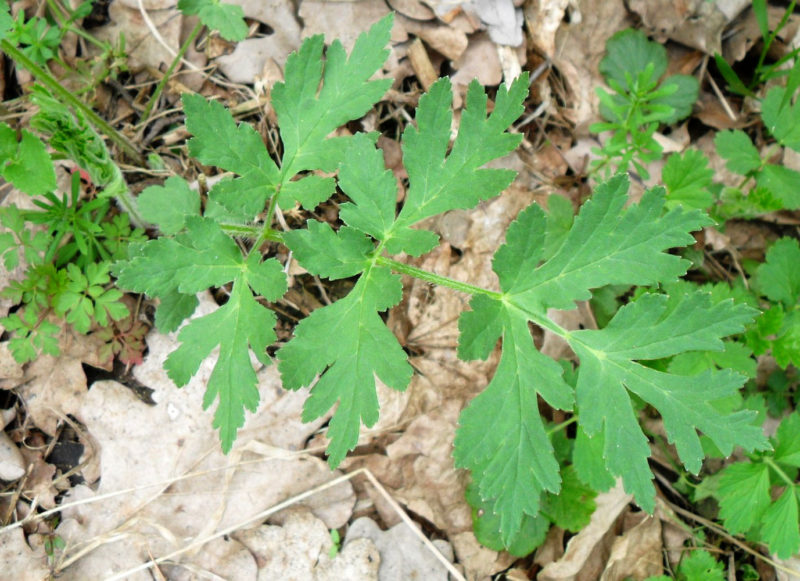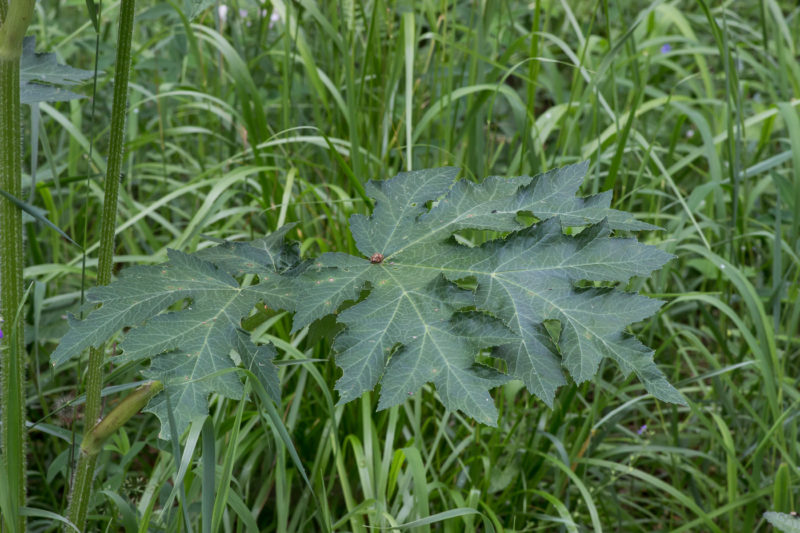The powerful bush received a botanical name, meaning "Hercules grass" in the name of the ancient Greek hero Hercules. People used to call Siberian hogweed “borsch” for nutrition. It is a generous honey plant, fodder and essential oil crop.
Material Content:
Botanical description of the plant
Siberian hogweed is only one of more than 50 species of the genus Heracleum umbelliferous family. The species term is sometimes misleading. In fact, Siberian hogweed is more common in Central Europe and central Russia, where it prefers places near ponds, forest edges, meadows. "Hercules grass" is distributed in the Ciscaucasia, Crimea, Western Siberia, Kazakhstan.
Description of the plant Heracleum sibiricum:
- Biennial or perennial with a powerful vertical rhizome.
- Shoots grow rapidly, resulting in a bush height of 150-180 cm.
- The stem is hollow, in the form of a ribbed tube, pubescent with coarse hairs.
- The leaves are huge (up to 50 cm), strongly dissected.
- Small yellowish-green flowers are collected in a large complex umbrella.
Hogweed flowering begins in June or July (depending on the climate of the area). Seeds ripen in early autumn.
The difference between the Siberian hogweed from poisonous species
All types of "Hercules grass" have common features. The similarity is manifested in the external structure and chemical composition. Hogweeds contain furocoumarins - photosensitizing compounds. When exposed to human skin, these substances many times increase sensitivity to light.
Sosnovsky hogweed and Siberian hogweed at a young age are similar in appearance. The second plant contains more furocoumarins. After the juice is exposed to the skin, strong and painful, poorly healing phototoxic burns occur in people. For most animals, plants are safe.
Phototoxicity of Siberian hogweed juice is less pronounced at a young age. The plant causes slight inflammation of the skin. The grass is safe, it can be used in food and as a means of traditional medicine. Green leaves, shoots and stems are consumed raw, pickled and salty. Raw materials are well preserved in dried or frozen form.
You should be careful not to confuse an edible and medicinal plant with a poisonous appearance.
The height of the bush of the hogweed of Sosnowski is from 1 to 4 m, the rhizome grows in depth by 1–2 m. Reddish spots are visible on the surface of the thick, rough stalk. The leaves are larger than that of the Siberian hogweed, yellowish-green, more than 1 m long.
The flowers in complex umbrellas are whitish pink, numerous. Flowering of the hogweed Sosnowski begins later than Siberian in July – August. The diameter of the inflorescences is 50 cm and more. The plant is often called the "green monster."
After the plant was discovered in the Caucasus, its use in agriculture began. Hogweed Sosnowski was too prolific and poisonous. Fodder culture quickly spread, became wild, weed control was difficult.
Powerful bushes continue to capture new territories. The most toxic are adult plants from July to September. Hogweed Sosnowski remains in one place for up to 12 years. After mowing, the overgrowth sprouts again.
Useful properties and application in medicine
All parts of Siberian hogweed have a specific spicy smell. Bees constantly swarm over large inflorescences giving a large amount of nectar and pollen. Honey is a dull yellow-gray color, fragrant, with a special flavor.
The Dahl dictionary contains several popular names for the Siberian hogweed. They called grass “pican”, “borsch”, “pigs”. The collector of Russian folklore wrote that the young shoots “eat, peeling” (peeling). Edible sour greens of hogweed were held in high esteem. A popular dish with boiled shoots and vegetables was popularly called "borsch". Then a wild plant was gradually replaced by garden crops.
Application in medicine are the leaves and rhizomes of Siberian hogweed.
The underground part is dug up in the fall, cut into pieces, dried and dried in the oven with moderate heating. Young leaves are harvested during flowering plants.
The benefits of hogweed are determined by its components:
- essential oil (3%);
- proteins rich in amino acid composition;
- coumarins and furocoumarins (1–2.5%);
- vitamins (mainly C and carotene);
- mineral elements;
- tannins;
- resins.
You can use herbs for diseases of the gastrointestinal tract, which are accompanied by dyspepsia, heartburn, flatulence. Siberian hogweed is used for colds, tonsillitis, bronchitis.
Therapeutic effects of Siberian hogweed:
- bacteriostatic or bactericidal (inhibits microorganisms or kills them);
- carminative (reduces gas formation in the intestine);
- moderate hypotensive;
- mild antispasmodic;
- vasodilator;
- soft choleretic;
- expectorant;
- diuretic;
- sedative.
The infusion and tincture of the leaves are indicated for deterioration of the motor and secretory functions of the intestine, and other problems in the digestive tract. A rhizome broth helps with flatulence, respiratory tract diseases, and bile secretion. Means have a relaxing effect in case of spasms of smooth muscles of internal organs.
Folk remedies with a plant
The medical use of edible hogweed largely coincides with the use of another representative of the umbrella family - angelica officinalis.The preparations of these plants are prescribed in folk medicine for poor digestion, lack of appetite, dyspepsia, hypertension and nervous disorders, to combat winter depression.
The infusion is prepared from 1 tsp. dried raw materials and 200 ml of boiling water. Brew in a cup, cover and insist 5 minutes. Take 150-200 ml of the infusion three times a day for digestive disorders, stress, neurosis. With the same ailments, you can drink an infusion prepared from 3 tsp. raw materials and 0.5 liters of cold water. Insist 8 hours, filter and take throughout the day.
The broth is used externally for relaxing and disinfecting baths. Brew 2 handfuls of dried raw materials 1 liter of water, boil for 5 minutes on low heat. Allow the solution to cool to body temperature. Take a sitz bath or foot bath with a decoction.
How to get rid of a herbaceous plant
Tall, tenacious grass with powerful roots, stems and leaves - an undesirable guest in the garden, suburban area, in the garden. It is easier to get rid of the cow parsnip on the site, completely cutting down the bushes before the seeds appear. Then you should dig up and burn the rhizomes. If there is no way to fight the "green monster" in this way, then you can cut off the inflorescences, not allowing the seeds to ripen and fall.
A herbicide that destroys only hogweed, but does not damage neighboring plants, does not yet exist. In the fields, wastelands, agents that contain glyphosate are used. Trade names of herbicides: "Hurricane", "Tornado". There is a biological method of fighting using hogweed moth - a natural enemy of this plant.
Possible harm
The furocoumarin contained in the juice of the plant can cause dermatitis after contact with hogweed. There is a skin reaction - from a slight inflammation to a disease (dermatosis), which looks like burns. The reaction does not occur immediately, but within a few hours or days.
The most severe irritation appears when in contact with the hogweed Sosnowski. Enough short-term sun exposure of the skin area on which the juice of the plant got.
The smell of hogweed is strong, felt at a distance of 2-5 m from the plant. Essential oil is considered an allergen, affects the mucous membrane of the respiratory tract and causes rhinitis. If juice enters the eyes, a severe burn of the mucous membrane occurs.
First aid is rinsing with running water. It is recommended to wash your skin with a sponge and soap. Then you need to close with clothing or a bandage the areas on which the juice of the hogweed has got. Protect your skin and eyes from direct sunlight for 48 hours. If juice enters the mouth, rinse with water.
It is necessary to beware of intense ultraviolet radiation when collecting medicinal and food raw materials or controlling them on the site. The same precaution is required when taking the drug inside.


